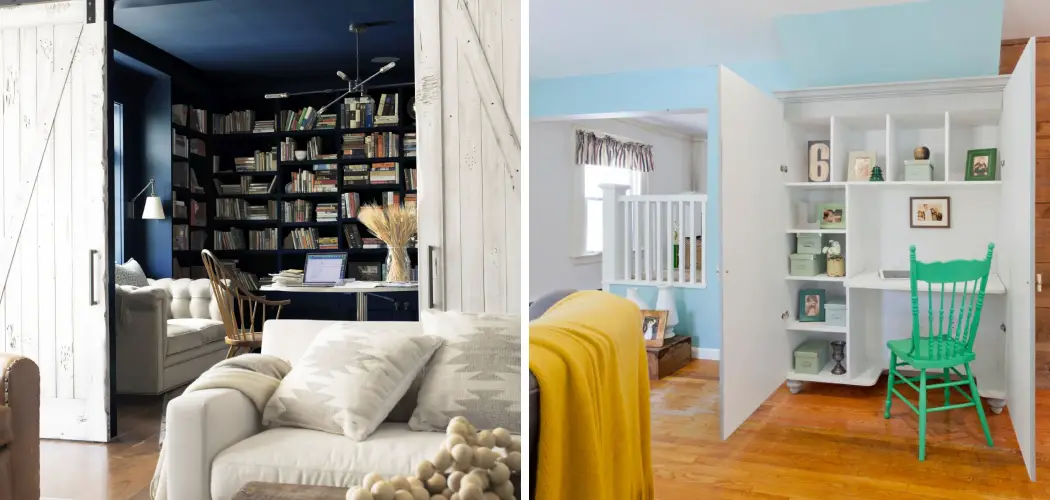Balancing the demands of a professional workspace within the cozy confines of a living room can be a challenging yet rewarding feat. The concept of hiding an office in a living room speaks to the growing trend of seamlessly blending work and leisure spaces in modern homes.
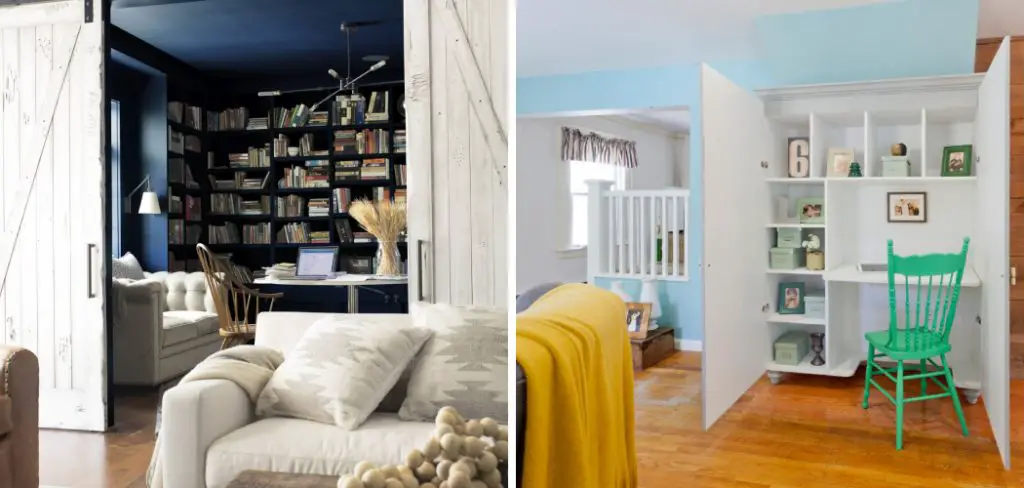
Whether your living room doubles as a home office or you simply want to discreetly integrate a workspace into your communal area, mastering the art of concealing an office setup ensures a harmonious and aesthetically pleasing environment.
In this guide, we’ll delve into creative strategies and practical solutions on how to hide office in living room, exploring innovative furniture arrangements, clever storage solutions, and decor choices that maintain the integrity of your living space while providing a functional and stylish home office retreat. Join us on a journey to transform your living room into a versatile haven where work and relaxation coexist seamlessly.
Importance of Creating a Dedicated Office Space in The Living Room
For individuals working from home, the living room may not be the most ideal place to set up an office. However, with a few simple tips and tricks, it is possible to create a dedicated workspace in your living room that is both functional and visually appealing.
Setting up a home office can have a significant impact on productivity and overall well-being. It provides a designated space for work, minimizing distractions and helping to maintain a healthy work-life balance. However, not everyone has the luxury of having a separate room for their office. This is where incorporating an office space into your living room can be beneficial.
Balancing Functionality and Aesthetics
The living room is often considered the heart of a home, and for good reason. It’s typically the most used space in a house, serving as a place for relaxation, entertainment, and gathering with loved ones. But with more people working from home these days, it’s becoming increasingly common to incorporate an office space into the living room.
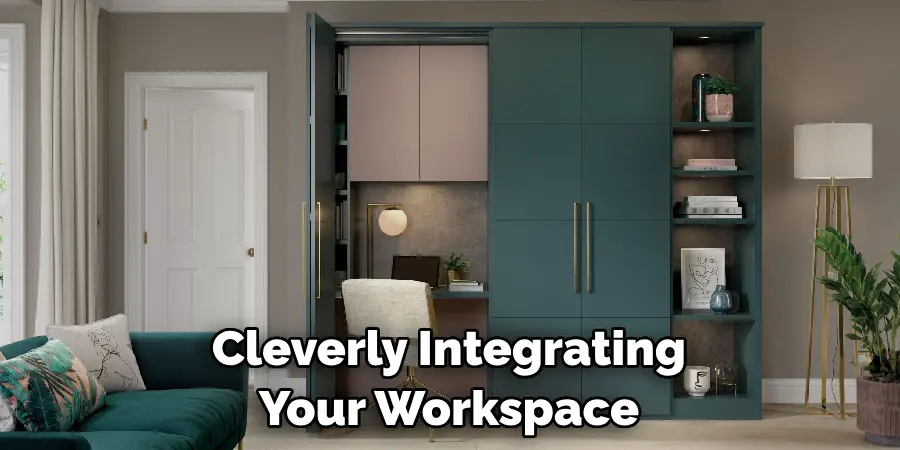
However, having an office in the living room can disrupt the overall flow and feel of the space. This is where the concept of “hiding” the office comes into play. By cleverly integrating your workspace into the living room, you can maintain functionality while also preserving the aesthetics of your home.
10 Methods How to Hide Office in Living Room
1. Use a Room Divider
One of the easiest ways to hide your office in the living room is by using a room divider. This can be a simple folding screen or even a bookshelf that separates your workspace from the rest of the room. You can choose a divider that matches your living room decor or one that complements it. This not only hides your office but also adds to the style of your living room.
2. Utilize Furniture Placement
Strategic furniture placement can also help to hide your office in the living room. Place your desk and chair against a wall or in a corner, with larger pieces of furniture like sofas or bookshelves acting as barriers. This will create a more defined workspace and visually separate it from the rest of the living room.
You can also use a folding screen or room divider to physically block off your office space when needed. By incorporating these furniture elements, you can easily transform your living room into a multifunctional space without compromising on style or functionality.
3. Invest in a Rollaway Desk
If you don’t have much space to work with, consider investing in a rollaway desk that can easily be hidden when not in use. These desks are compact and can be rolled into a closet or under a bed when you’re finished working. This is a great option for those who want to hide their office in the living room but still need a functional workspace.
4. Create an Office Nook
If you have an unused corner or alcove in your living room, turn it into an office nook. Add floating shelves above for storage and use a small desk and chair to create a dedicated workspace within the room. Use curtains or a room divider to conceal the nook when it’s not in use.
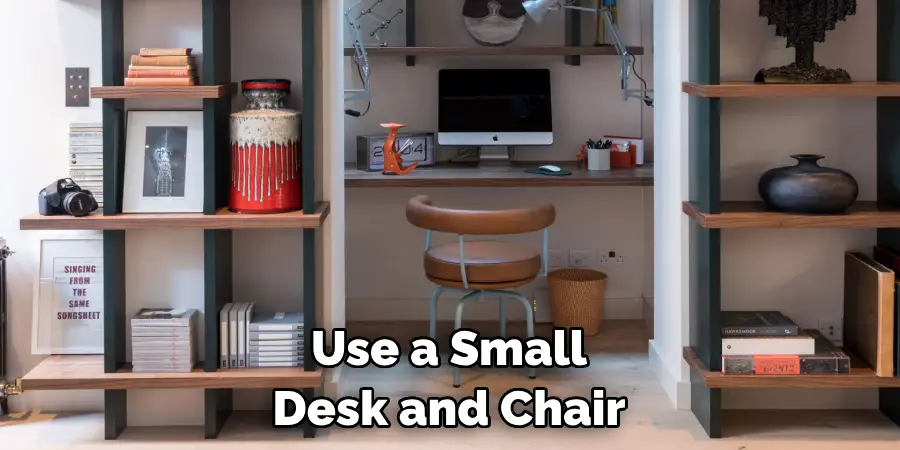
This is a great option if you don’t have an extra room for a home office, but still want to keep your work area separate from your living space. You can easily hide away the office with a simple curtain or folding screen, giving you the flexibility to use the space as a living room or office whenever needed.
5. Conceal with Curtains
Installing curtains around your workspace can help to conceal it when not in use. Simply pull the curtains closed when you’re finished working to hide your office from view. You can even use curtains that match the rest of your living room decor, blending it seamlessly into the space. However, make sure the curtains are thick enough to fully hide your office.
6. Use Decorative Storage Boxes
Invest in some decorative storage boxes that can double as decor while also hiding any office supplies or paperwork on your desk. These boxes can be stacked on shelves or placed under tables for easy organization and concealment. You can even choose boxes that match your living room’s color scheme or style for a cohesive look.
7. Incorporate Plants
Plants not only add life and color to your living room, but they can also help to hide your office space. Place tall plants near your desk or use smaller potted plants on shelves to create visual barriers between work and relaxation areas. Certain plants, such as bamboo or spider plants, are known for their air-purifying abilities and can help to improve the air quality in your office space.
8. Opt for Multifunctional Furniture
Consider investing in multifunctional furniture pieces, such as ottomans with hidden storage compartments or desks that can be folded into a wall when not in use. These pieces can help to maximize space and hide your office in plain sight. You can also repurpose existing furniture to serve dual purposes, such as using a bookshelf with a pull-out desk or using a console table as a makeshift desk.
9. Use a Bookcase as a Divider
Instead of a traditional room divider, use a bookcase to separate your office from the rest of the living room. This not only creates a physical barrier but also provides additional storage for books and office supplies. You can choose a bookcase with open shelves to allow natural light to pass through or opt for one with closed cabinets for a more sleek and organized look.
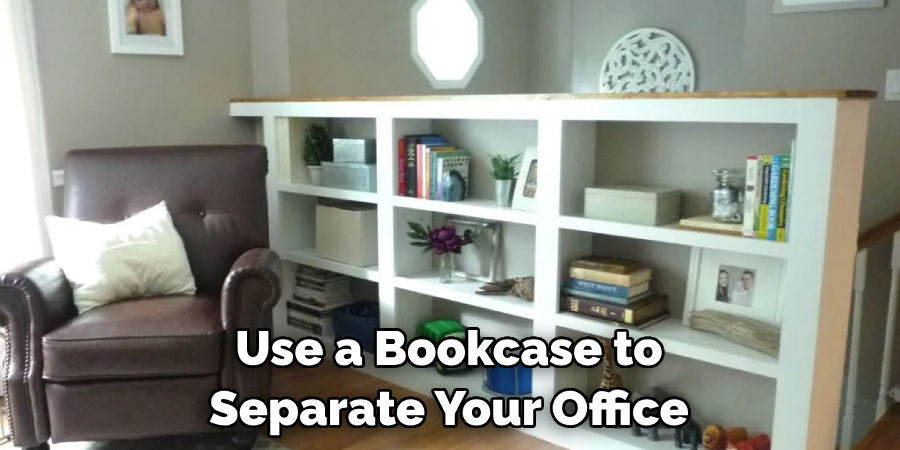
10. Get Creative with Decor
There are endless ways to creatively hide your office in the living room using decor. Hang artwork or tapestries on the walls to cover up any shelves or storage units, or use decorative screens to conceal your workspace when needed.
The key is to think outside the box and find unique ways to incorporate your office into the existing decor of your living room. However, make sure not to overcrowd the space with too many pieces of decor as this can make the room feel cluttered and overwhelming.
Some Tips and Tricks to Achieve a Seamless Balance Between Work and Play
Choose Multifunctional Furniture
One of the easiest ways to hide an office in the living room is by using multifunctional furniture. This could include a desk that doubles as a console table or a bookshelf with hidden storage for office supplies. By incorporating these dual-purpose pieces, you can maintain a cohesive design while also having a designated workspace.
Utilize Room Dividers
Room dividers are another great solution for creating separation between the living room and office space. You can opt for a traditional screen or get creative with bookshelves, curtains, or even plants to create a more natural division. Not only do they hide your workspace, but they also add visual interest to the room.
Conceal with Cabinets
If you want to completely hide your office when not in use, consider investing in a built-in cabinet or armoire. These pieces can be closed off when not needed, keeping your workspace out of sight and out of mind. Plus, they provide ample storage for all your office essentials.
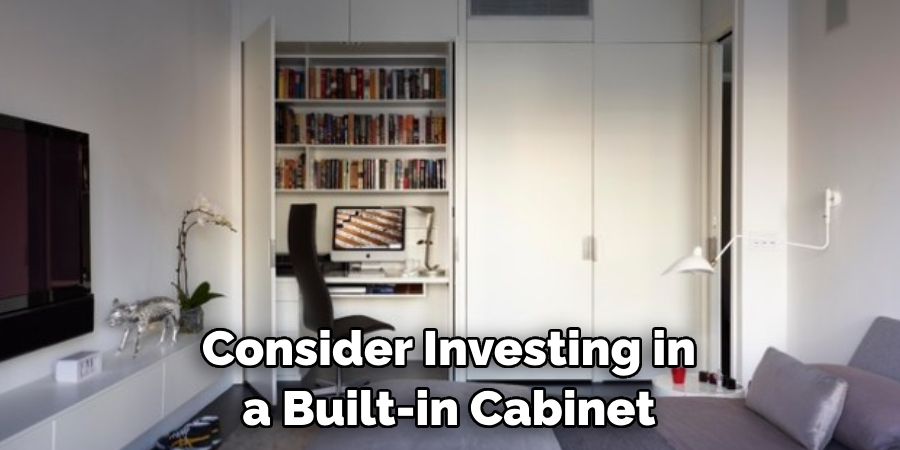
Blend in with the Decor
In order to seamlessly integrate your office into the living room, it’s important to match the decor and style of your workspace with the rest of the room. This could mean using similar color schemes, textures, or patterns. By blending in with the overall design, your office will feel like a natural extension of the space rather than an eyesore.
Common Mistakes to Avoid When Hiding Your Office in the Living Room
Not Considering Noise Levels
One of the most common mistakes when hiding an office in the living room is not considering noise levels. If you’re planning on doing video calls or phone calls from your workspace, it’s important to choose a location that is relatively quiet.
The living room may not be the best spot if there are constantly people walking in and out, or if you have a TV that is often on in the background. Consider these factors when choosing where to set up your office so that you can have a distraction-free working environment.
Not Having Enough Storage
Another mistake that people make when hiding their office in the living room is not having enough storage. It can be tempting to just set up a desk and a chair, but without proper storage for your work supplies, your living room may quickly become cluttered and chaotic. Make sure to invest in some shelves, cabinets, or even a filing cabinet to keep your workspace organized and tidy.
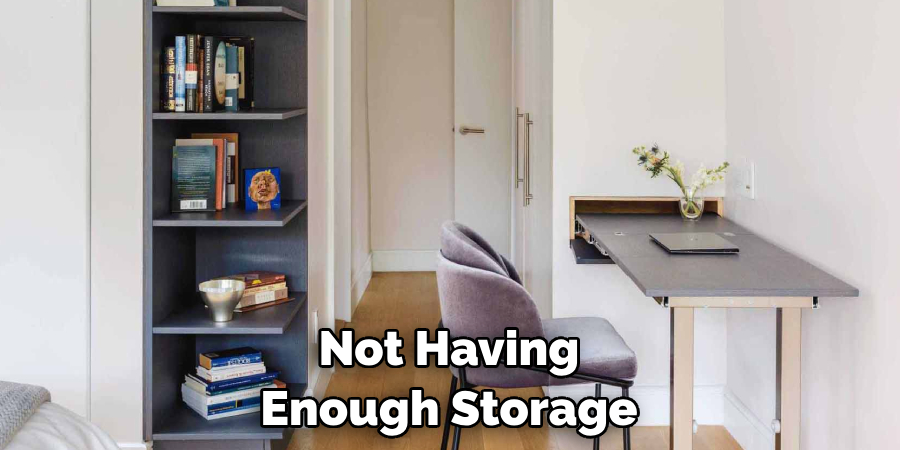
Not Blending in with the Decor
When hiding your office in the living room, it’s important to make sure that it blends in with the rest of the decor. You don’t want your workspace to stick out like a sore thumb and disrupt the overall aesthetic of your living room. Choose furniture, accessories, and colors that complement or match the rest of your living room so that your workspace seamlessly fits in.
Conclusion
As we’ve seen, there are countless ways to cleverly hide your office in your living room and maintain both style and functionality. By utilizing creative storage solutions, utilizing multi-purpose furniture, and using decorative elements to conceal work areas, you can seamlessly integrate your workspace into your home without sacrificing design.
Don’t let the idea of working from home cramp your home decor style – instead, embrace it and make it work for you. With some careful planning and a little creativity, your workspace will blend effortlessly with the rest of your living room. So go ahead and try out these strategies for how to hide office in living room! Your stylishly hidden office awaits.

